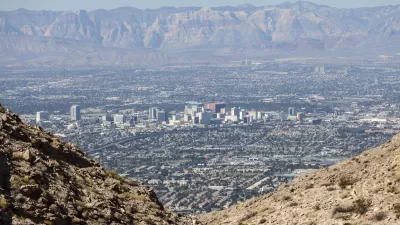The fixed costs of infrastructure projects leave cities like Flint struggling to pay their bills with fewer people pooling their resources.
Alana Semuels examines either side of the vast chasm separating American communities: "The contrast between San Jose and Flint illuminates a truism about regional inequality in America: The cities that are struggling the most also have the least resources to deal with their problems."
The article goes into a detailed comparison between the benefits of having a growing population, workforce, and tax base, like in San Jose, and the drawbacks of a shrinking population, like in Flint. The imbalance between the two regions is put into even more stark perspective when considering the Californian drought compared to the city of Flint's proximity to the Great Lakes, which also happens to be the largest supply of freshwater in the world. Yet, Flint's water is expensive and toxic, while San Jose is investing huge sums in new water infrastructure.
Semuels also shares news that the U.S. Senate is considering legislation that would provide relief to communities struggling to cover the expenses of infrastructure that provides the basic human services:
A bill introduced by Michigan Senators Debbie Stabenow and Gary Peters, both Democrats, would authorize the federal Drinking Water State Revolving Fund to make up to $100 million in subsidized loans or grants for infrastructure improvements to any state that receives an emergency declaration because of a public-health threat due to contaminants in a public drinking-water system.
The article includes more examples of infrastructure challenges that compare to Flint's, as well as more discussion about how shrinking cities can take a page from San Jose in approaching their infrastructure challenges.
FULL STORY: A Tale of Two Water Systems

Alabama: Trump Terminates Settlements for Black Communities Harmed By Raw Sewage
Trump deemed the landmark civil rights agreement “illegal DEI and environmental justice policy.”

Study: Maui’s Plan to Convert Vacation Rentals to Long-Term Housing Could Cause Nearly $1 Billion Economic Loss
The plan would reduce visitor accommodation by 25% resulting in 1,900 jobs lost.

Why Should We Subsidize Public Transportation?
Many public transit agencies face financial stress due to rising costs, declining fare revenue, and declining subsidies. Transit advocates must provide a strong business case for increasing public transit funding.

Paris Bike Boom Leads to Steep Drop in Air Pollution
The French city’s air quality has improved dramatically in the past 20 years, coinciding with a growth in cycling.

Why Housing Costs More to Build in California Than in Texas
Hard costs like labor and materials combined with ‘soft’ costs such as permitting make building in the San Francisco Bay Area almost three times as costly as in Texas cities.

San Diego County Sees a Rise in Urban Coyotes
San Diego County experiences a rise in urban coyotes, as sightings become prevalent throughout its urban neighbourhoods and surrounding areas.
Urban Design for Planners 1: Software Tools
This six-course series explores essential urban design concepts using open source software and equips planners with the tools they need to participate fully in the urban design process.
Planning for Universal Design
Learn the tools for implementing Universal Design in planning regulations.
Smith Gee Studio
Alamo Area Metropolitan Planning Organization
City of Santa Clarita
Institute for Housing and Urban Development Studies (IHS)
City of Grandview
Harvard GSD Executive Education
Toledo-Lucas County Plan Commissions
Salt Lake City
NYU Wagner Graduate School of Public Service





























